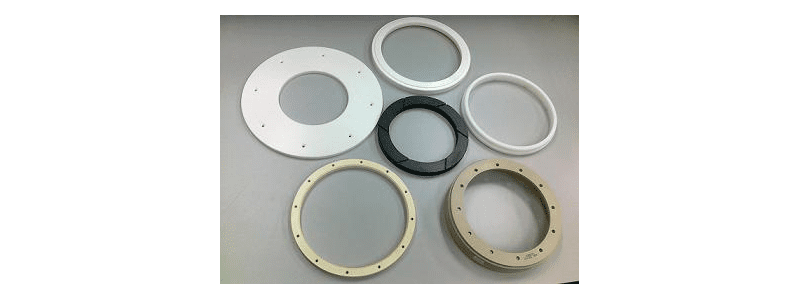CMP or chemical mechanical planarization is a polishing process used in the manufacturing of semiconductors. It is usually used to finish a silicon wafer after it has been etched and patterned into individual chips. The CMP process can also be used to remove excess photoresists from the surface of an object made using photolithography.
The CMP process can be divided into three steps:
1. Polishing – the polishing pad is loaded onto the polishing machine and pads are attached to both sides of it. The wafers are put in the holder, which is then placed into the polisher. The machine starts up and the pad starts rotating and applying pressure on the wafer. The polishing solution containing abrasive particles (silicon dioxide and/or aluminum oxide) is forced at high speed through channels on both sides of the pad and onto the wafer, removing material from both the front and back surfaces of the wafer until a flat surface is achieved.
2. Cleaning – The dirty pads are replaced with clean ones, and spinning stops while lubricant is applied to both sides of each pad.
Among these processes, the CMP ring is critical and essential. The material quality and machining process make the product good or not.
Why PPS and PEEK are commonly used?
For the polishing process, there are two kinds of retainer rings, one is a metal retainer ring, the other is a plastic retainer ring. However, metal retainer rings have a short life span due to the high friction coefficient and easy-scratched surface compared with plastic ones. Besides, metal rings can also lead to severe particle generation which will cause lower wafer quality. Therefore, more and more manufacturers have switched from metal to plastic rings (e.g., PPS or PEEK). And usually, the PEEK large tubes are mostly used in the process due to the easy machining. Nowadays, the most polishing slurry is abrasive-free, however, the abrasive still exists in some applications and will cause severe damage to the plastic material.
PPS, PEEK is the most commonly used material for CMP retainer rings. If you are concerned about the cost, then PPS is another option. We could provide a large PPS sheet to meet the different sizes of CMP rings. They are ideal for this kind of application because of the material’s properties: stiffness, excellent resistance to chemicals and temperature (up to 85°C), hardness (up to 85HRC), and fatigue resistance.
PPS and PEEK are two of the most common materials used in CMP retainer rings. Both have excellent physical properties such as chemical resistance, high-temperature resistance, low coefficient of friction, high hardness, and low water absorption. However, they also differ significantly in their mechanical properties.
The two materials have some excellent properties that make them attractive:
1) low coefficient of thermal expansion;
2) Lower modulus of elasticity;
3) Good chemical resistance;
4) Excellent abrasion resistance;
5) Superb stiffness to weight ratio.


